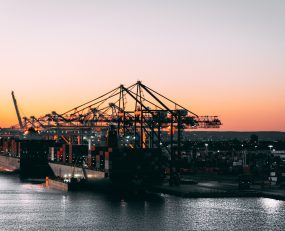
Infrastructure, particularly logistics infrastructure, has become highly politicised. China’s ‘Belt and Road’ initiative has made the building of ports, roads and railways an issue of strategic competition between major powers. The latest iteration of this rivalry is the EU-Japan ‘Connectivity Partnership’.
This agreement, signed by Japan and the EU on September 27 has the stated intention of enabling collaboration on “all dimensions of connectivity, bilaterally and multilaterally, including digital, transport, energy and people-to-people exchanges”. The location of this collaboration is identified as being “with partner third countries… notably in the regions of the Western Balkans, Eastern Europe, Central Asia, Indo-Pacific, as well as in Africa”.
Undoubtedly the catalyst for this has been China’s investment and infrastructure offensive that is perceived to have made inroads not just in Asia but also regions such as Africa and even Southern Europe. The perception that China is doing this by imposing heavy debt-loads on the nations where the projects are taking place was referred in the Japan-EU agreement; The EU and Japan intend to “promote free, open, rules-based, fair, non-discriminatory and predictable regional and international trade and investment, transparent procurement practices, the ensuring of debt sustainability and the high standards of economic, fiscal, financial, social and environmental sustainability.”
However, it also appears that Japan in particular is concerned that China intends to lock out other nations from certain types of infrastructure, notably ports, giving preferred access to its state-owned providers. The implication is that the EU and Japan would collaborate to provide funding for the development of alternative ports.
It is unclear if there any specific projects that are earmarked for support by this initiative. Certainly, Japan already has access to financing structures through the Asian Development Bank whilst the EU is struggling to re-orientate its European Investment Bank. However, the ability of these organisations to identify investments which are viable in commercial terms is something that they have not always found easy. Of course, the Chinese do not have an unblemished record in this area either, with the example of port development in Sri Lanka being an example.
The world appears to be moving towards is an emerging imbalance between the supply of investment money and the demand for infrastructure finance, with not altogether well-developed channels for resolving this mis-match. The implication would be inflation in the price of projects of major logistics infrastructure.
Source: Transport Intelligence, October 10, 2019
Author: Thomas Cullen